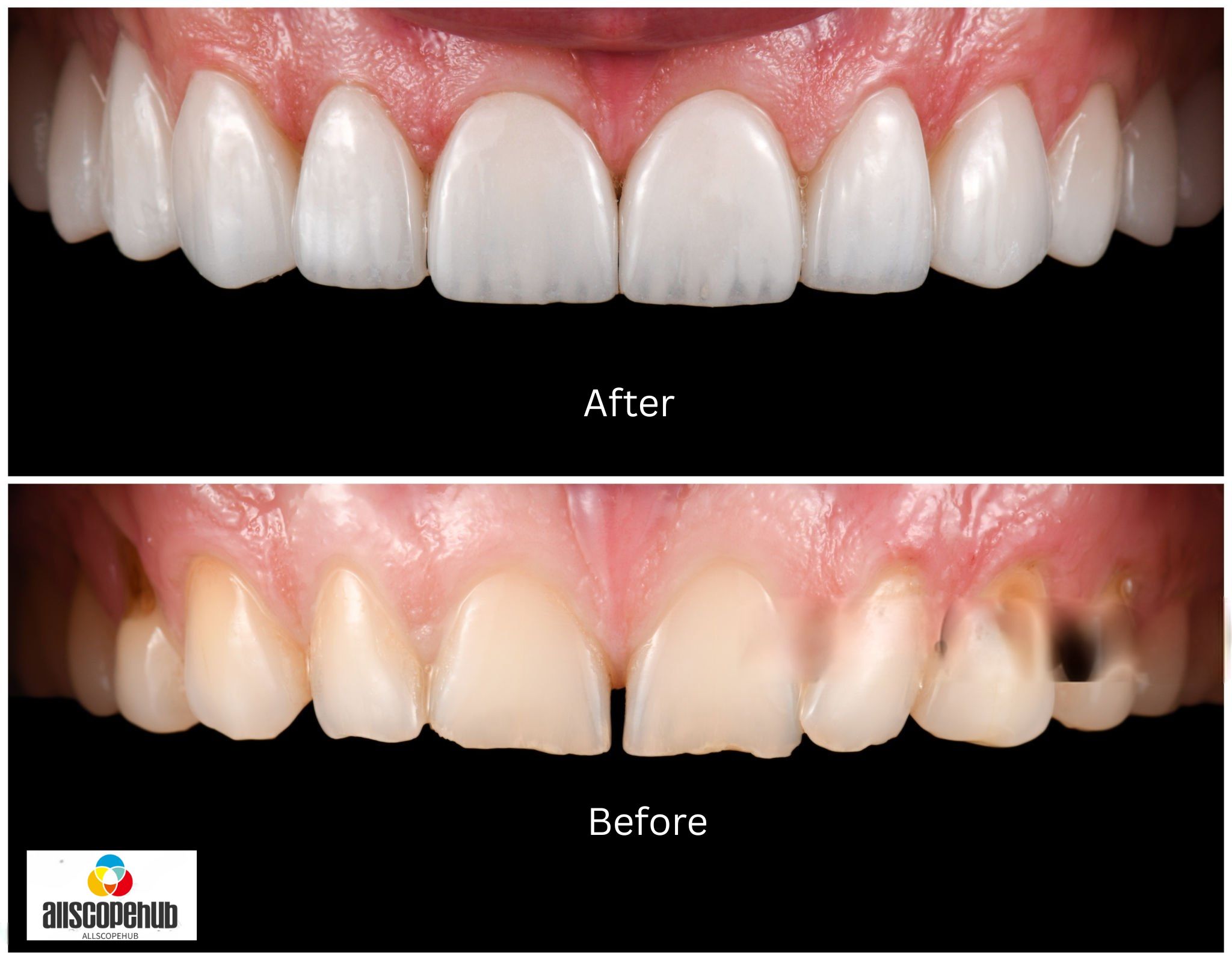Introduction
A beautiful smile boosts confidence, but dental imperfections like chips, gaps, or discoloration can hold you back. Dental bonding is a simple yet effective cosmetic procedure that can fix these issues in just one visit to the dentist. This guide will explore dental bonding, its benefits, and fundamental before-and-after transformations.
What Is Dental Bonding?
Dental bonding is a cosmetic dental procedure where tooth-colored composite resin is applied to teeth to repair damage, close gaps, or improve appearance. The material is shaped, hardened with a special light, and polished to blend seamlessly with your natural teeth. It’s quick, painless, and affordable compared to other dental procedures. Bonding can enhance the aesthetics of your smile without requiring invasive treatments like veneers or crowns.
Dental Bonding for Gaps
Dental bonding for gaps is an excellent solution if you have small gaps between your teeth. The composite resin is applied to the edges of the teeth, filling the space and making your smile more uniform. It’s a great alternative to orthodontic treatments like braces or aligners when dealing with minor gaps. The procedure is painless and can often be completed in under an hour, offering an immediate improvement in your smile.
Dental Bonding for Front Teeth
Dental bonding for front teeth requires precision and expert color matching, as the front teeth are most visible. It’s ideal for fixing minor imperfections, such as small cracks, discoloration, or gaps, ensuring a natural and flawless smile. Since front teeth are the focal point of your smile, proper bonding can enhance your overall appearance and boost your confidence.
Dental Bonding for a Chipped Tooth
A chipped tooth can make your smile look uneven. Dental bonding for a chipped tooth restores the tooth’s shape and structure using composite resin. The painless process is usually completed within an hour, providing instant results. The bonded material mimics the natural enamel, ensuring a seamless and natural look.
Dental Bonding for Black Triangles
Black triangles are small gaps between teeth and gums due to gum recession or bone loss. Dental bonding for black triangles fills these spaces with composite resin, improving aesthetics and preventing food buildup that could lead to decay. Bonding is a cost-effective way to address these spaces, reducing the appearance of aging in your smile.
Dental Bonding for Receding Gums
When gums recede, they expose the tooth roots, causing sensitivity and an uneven smile. Dental bonding for receding gums helps cover exposed roots, reducing sensitivity and enhancing the appearance of your teeth. It also protects the roots from further damage, improving both function and aesthetics.
How Long Does Dental Bonding Last?
The longevity of dental bonding depends on oral hygiene and lifestyle habits. How long does dental bonding last? On average, bonding lasts 3 to 10 years before needing touch-ups or replacement. Avoiding habits like nail-biting and using teeth as tools can extend its lifespan. Regular dental check-ups and proper care can also help maintain the bonding’s durability.
Dental Bonding vs. Veneers
Dental bonding vs. veneers is a common debate when considering cosmetic dental work. Veneers are thin porcelain shells placed over the teeth, while bonding uses composite resin. Bonding is cheaper and quicker, while veneers last longer and resist stains better. The best option depends on budget, aesthetic goals, and durability preferences. While veneers offer a more long-term solution, bonding is an excellent choice for those seeking an affordable and reversible treatment.
Dental Bonding at Home
Some may wonder if they can try dental bonding at home. While DIY kits exist, they lack the durability and precision of professional treatments. Poor application can lead to uneven surfaces, improper bonding, and potential damage to the teeth. It’s always best to seek professional dental care for long-lasting and safe results. Attempting bonding at home can result in weak adhesion, which may cause the material to chip or wear down quickly.
Do It Yourself Dental Bonding
Do-it-yourself dental bonding is risky and not recommended. Professional bonding involves specialized tools, materials, and expertise to ensure durability and a natural look. DIY attempts often result in weak adhesion, poor aesthetics, and increased risk of tooth damage. Investing in professional treatment provides a more reliable and aesthetically pleasing result.
Dental Bonding Cost
Dental bonding cost varies based on location, dentist experience, and complexity. On average, bonding costs $100 to $600 per tooth. While more affordable than veneers or crowns, prices can increase for extensive repairs or multiple teeth treatments. Some dental offices offer financing options or payment plans to make the procedure more accessible.
Does Insurance cover Dental Bonding?
Many wonder if dental bonding is covered by insurance. The answer depends on whether the procedure is cosmetic or medically necessary. Insurance may cover part of the cost if bonding is done for structural repairs, such as fixing a broken tooth. However, most insurance plans will not provide coverage if it’s purely cosmetic. Checking with your insurance provider can clarify your coverage options and potential out-of-pocket expenses.
Dental Bonding Before and After: Real Transformations
The impact of dental bonding before and after is remarkable. Patients see immediate improvements in tooth shape, color, and alignment. Before bonding, teeth may appear chipped, discolored, or uneven. After bonding, they look smooth, symmetrical, and natural. Many patients experience a boost in confidence after bonding treatment, as it provides a noticeable enhancement with minimal effort.
Conclusion: Should You Consider Dental Bonding?
Dental bonding is an excellent choice if you’re looking for a quick, affordable way to enhance your smile. It’s effective for fixing minor dental imperfections, requires no anesthesia, and provides instant results. Whether you’re dealing with chips, gaps, or discoloration, bonding offers a convenient solution. Consult your dentist to see if bonding is proper for you, and take the first step toward a flawless smile!



